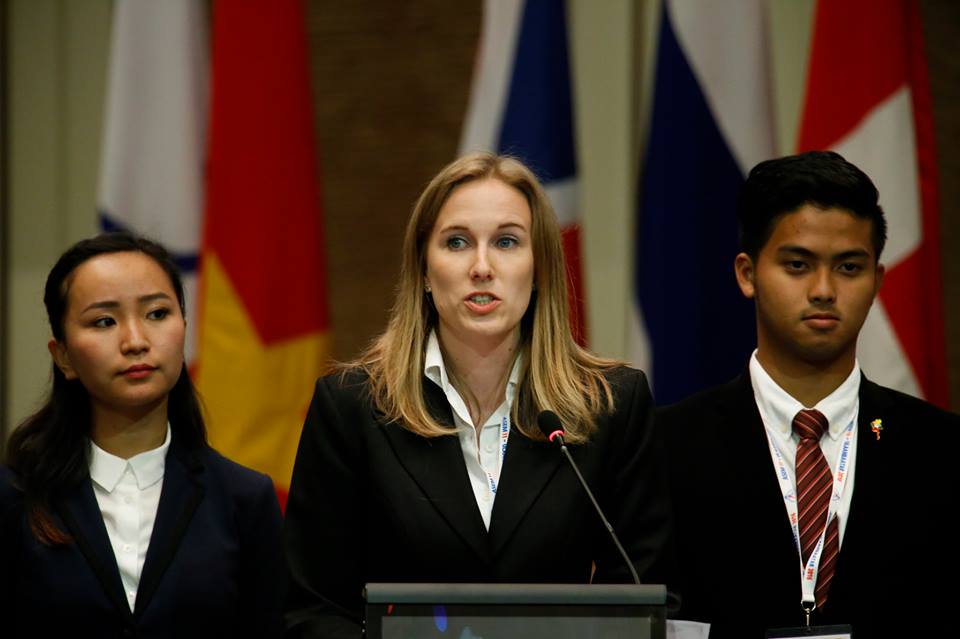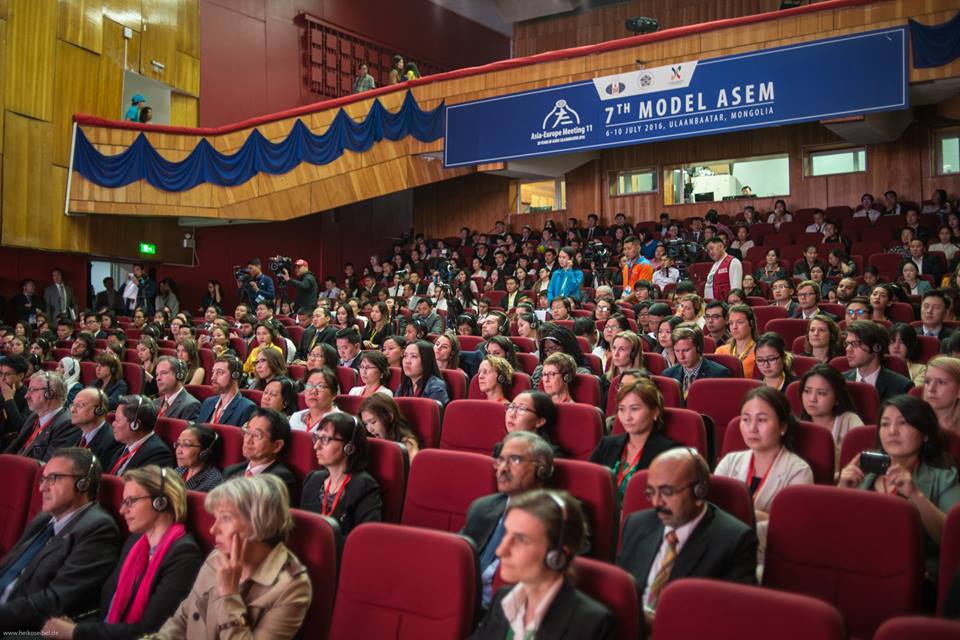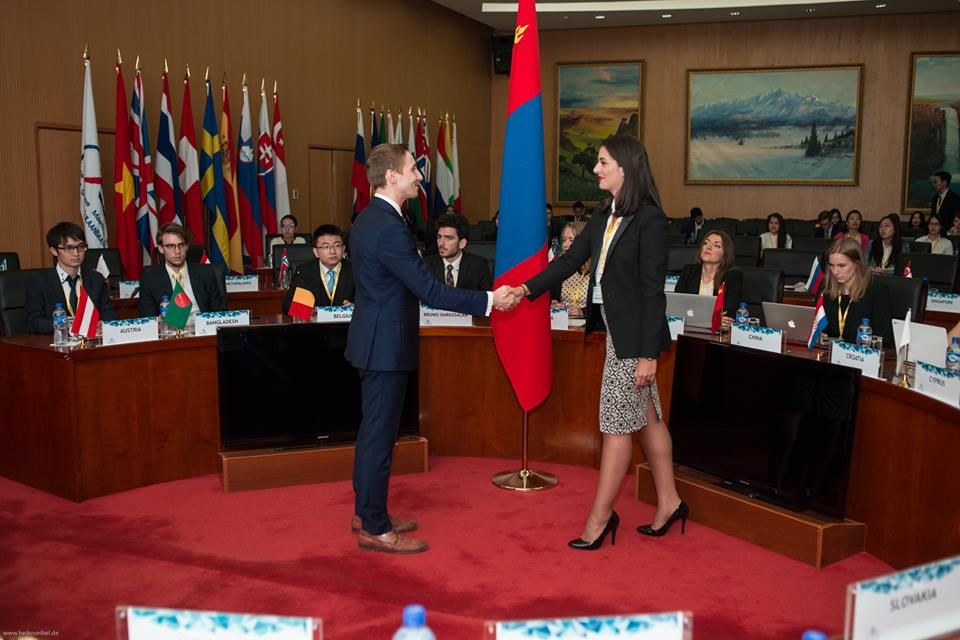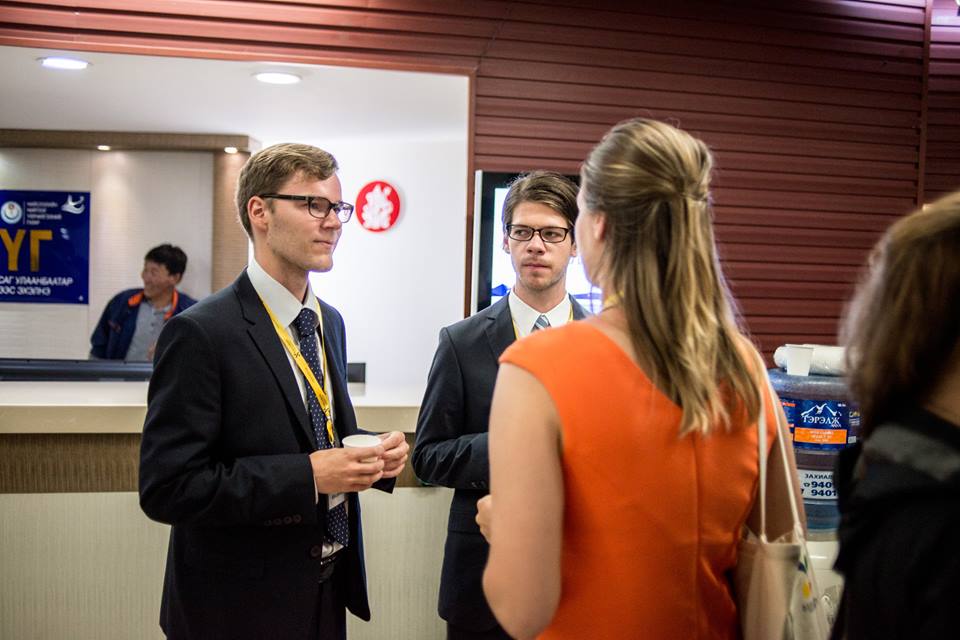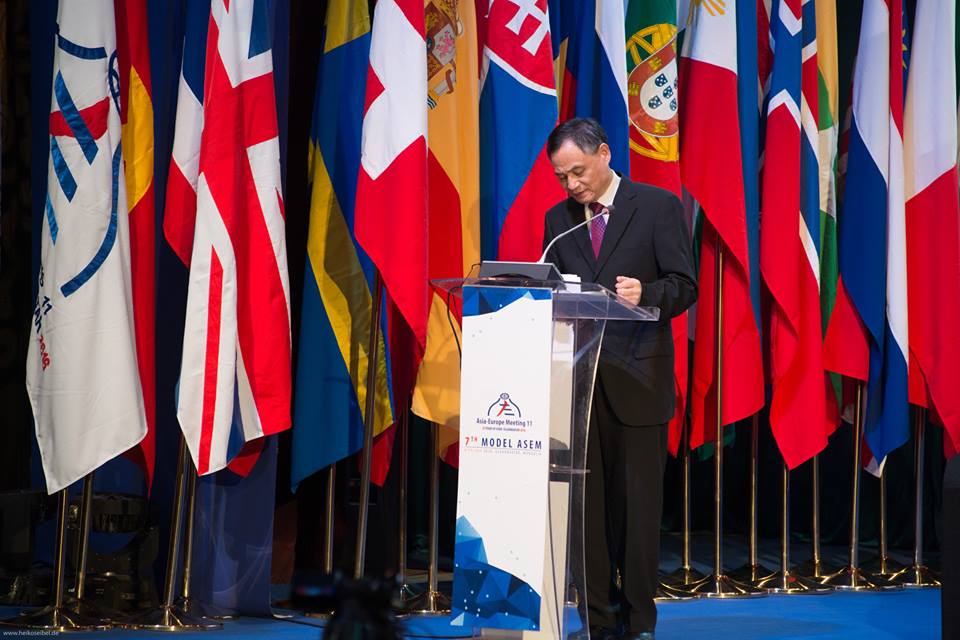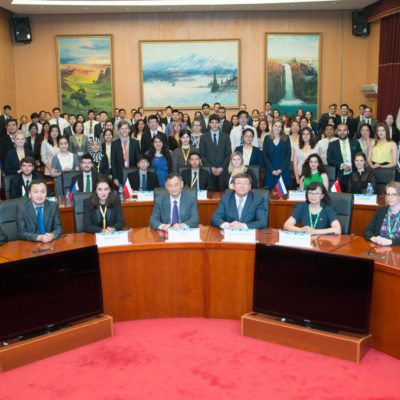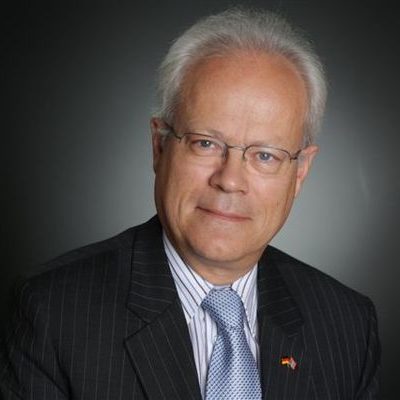Text By Anna Valmero
Photos by Heiko Seibel
Laura Zermin, a student leader delegate at the 7th Model Asia-Europe Meeting (ASEM), represented the youth’s voice when she delivered an intervention speech at the 11th ASEM Meeting recently held in Ulaanbaatar, Mongolia in July 2016. The intervention she and her colleagues drafted for the high-level ministerial forum focused on building connectivity through cultural exchange and fostering growth through intellectual discourse among members of the youth in both Asia and Europe.
Laura Zermin is pursuing a Masters Degree in Sustainable Development at the Geneva Graduate Institute in Switzerland and currently on her exchange semester at the Universidad de los Andes in Bogotá. She has been active in several international as well as regional initiatives and conferences in the fields of innovation, consulting and sustainable development. Laura has several years of work experience in research communication and project management with the European Union funding schemes and during the last year, she has worked with different international research projects on conflict, peaceful transitions and development.
The Model ASEM is an annual student simulation of the high-level meeting organised by the Asia Europe Foundation (ASEF) to provide cultural exchange, professional training and simulation of diplomacy proceedings for future young leaders in 53 ASEM member states. This year, it partnered with Mongolian Youth Federation (MYF).
The interview has been edited for brevity and clarity.
Anna Valmero: Good day Laura! Congratulations for representing the youth and providing an intervention at the ASEM 11 Summit. This is the first time and is dubbed a milestone for the ASEM Summit and for youth represented in those countries. Please discuss the preparations and process that the team did in selecting the fine points for the message you delivered during the speech.
Laura Zermin: It is a pleasure. The three points we focused on in our intervention – social, environmental and economic connectivity – were derived from a survey conducted by ASEF in which 3,900 students participated. When asked about what they thought ASEM leaders should focus on in the upcoming years, these three topics emerged. Within social connectivity, the inclusion of youth and women as well as the provision of quality education were deemed as key for equal participation of all in society. The ratification of the Paris Climate Agreement and the implementation of the Sustainable Development Goals (SDGs) are crucial for enhanced environmental connectivity. Within economic connectivity, we particularly emphasised youth unemployment, the need for decent work opportunities and the importance of fostering entrepreneurship.
In order to draft the speech, we worked in a team of six, including the four youth representatives at the summit as well as two Model ASEM delegates with experience in speech writing. Before, I wouldn’t have guessed how much work goes into a short intervention of three minutes! I learned a lot from my fellow delegates and I think it was a great team work.
Q: Connectivity is a buzzword at this year’s summit. As a Model ASEM young leader, what is connectivity for you and why is it important for the youth in today’s globalised world?
Laura: For me, connectivity is the process that brings two formerly unrelated areas closer together. These “areas” span the cultural, economic, educational and political spheres. The areas come closer together through the initiated exchange. Moreover, it fosters building of relationships – that is, in terms of economic, social and political relationships.
I understand connectivity as a phenomenon that goes beyond the mere action and re-action thinking of two things “only” being connected. As the forum theme this year, for me, that “connectivity” includes partnership, an experience of the formerly unknown and this unknown becoming familiar. “Connectivity” overcomes the negative effects that are sometimes associated with increased globalization – increased nationalism, increased protectionism and the fear of the other. In this sense, connectivity is crucial for the ASEM youth, as it presents an opportunity to get to know each other in these different areas and to help shape the world for the better.
Q: During your speech, you urged leaders to focus on three areas for connectivity: social, environmental and economic. Please provide further discussions on why these three were chosen and what are the tangible steps that you think can be done both by the youth and global leaders to achieve these goals?
Laura: With regards to achieving these goals: I think for global leaders especially, and for us, the youth, it is important to not loose sight of the goals we have set for ourselves. These are complex problems and we should not resort to easy and makeshift solutions that are not sustainable in the long run.
In general, I think the first tangible step for the youth is to realise that we can be the agents of change and that we can have an impact on the implementation of these goals. The youth can be especially effective in aiding that process of change in their home countries, by starting our own initiatives – the most important thing not being their topic, but that we are passionate about them. Looking at the big picture, the youth should use the forums provided by the global leaders to see their views, ideas and plans for implementation, as well as to contribute to the realisation of the targets.
Q: At the conclusion of the ASEM 11 Summit, what are your hopes in terms of the Ulaanbaatar Declaration and how it relates to empowering the youth as active agents of change in ASEM and in the world?
Laura: The Ulaanbaatar Declaration is a great step forward as it acknowledges the importance of the youth’s voice and the need to increase youth engagement in the overall ASEM process. I am hopeful that this declaration will translate into concrete actions from the global leaders for an increased exchange between the leaders and the youth. And also to pave way for the establishment of more processes for the youth to make their voice heard and actively participate in the decision process in various fora.
Our participation during the Opening Ceremony for the intervention enabled us to address the 53 ASEM partners – it is such a crucial milestone for the youth. I hope that the global leaders will continue to create and provide such opportunities for us.
Q: For your part, how did the training and post-training provided for Model ASEM Young Leaders by ASEF prepare you to be part of this milestone initiative?
Laura: The Model ASEM – a simulation of the actual summit – was especially helpful in obtaining a deeper understanding of the ASEM process and in experiencing what international diplomacy means and entails, what it can achieve and, on an individual basis, how we can act and negotiate diplomatically.
I also gained a lot from the intriguing discussions and exchanges with my fellow delegates. We all come from very different backgrounds – academically, geographically, culturally – but are all very engaged in one way or the other in our societies. That made for great and rich conversations that taught me at least as much as the official program. And of course, I made great friends that I am convinced I will keep on learning from and that will continue to inspire me in the future.
Q: How can global meetings such as ASEM involve the youth more? Today, do you feel that the youth’s voice is given enough participation in this global meetings? Why or why not? And what can be done to make the situation better?
Laura: Undeniably, there is an effort from international meetings and global leaders to involve the youth in various processes that exist. Global leaders acknowledge that the youth is an important actor that can help shape the outcomes and implementation of those meetings. I am convinced that the most important and difficult part is to not only listen to the youth — but to let our ideas, fears and hopes shape concrete outcomes, as well as to actively include the youth in the implementation of the agreements. Here, the enhancement of existing engagement processes as well as the creation of new ones are needed — to help make the youth’s contribution more impactful and sustainable.
Of course, international decision-making processes are unbelievably complex and I think a prejudice towards the youth – that might be partially justified – is that we do not yet grasp this complexity and are too naive and unrealistic on some fronts. This is why initiatives such as the Model ASEM remain crucial: They both educate the youth on the challenges faced by international leaders and show the leaders that we are using the processes they are engaged in, too, hence bridging this gap.
Q: As a young leader, what are your hopes to further promote cooperation and connectivity in ASEM especially in catering to youth unemployment and the education gaps still existing in the member states?
Laura: As was also underlined in the Model ASEM Chair Statement, increased cooperation and connectivity across the ASEM countries have the potential to address these crucial problems of youth unemployment and education gaps. This includes, for example, increased student mobility and enhanced university credit recognition. We also emphasised the importance of digitalisation within education – both when used as a tool to improve the learning experience as well as a subject matter for students to look into. This can lead to increased digital connectivity, entrepreneurship and innovation within all ASEM countries.
My hope is that by following all those measures, the two continents can benefit from their different strengths, learn from each other and come up with creative solutions to remedy challenges in the realm of education.
Q: Why is the youth a powerful agent of change in society and what are the actionable steps that today’s youth have taken to promote further inclusion in discussions and to help make sustainable development happen?
Laura: I see us as a powerful agent of change due to the enthusiasm, optimism and energy we put into everything we do. This optimism that some might call naivety can help us overcome obstacles in new and innovative ways that were maybe not explored within the existing structures.
Another powerful tool that helps us to catalyse change is our connectivity paired with our curiosity. International youth events such as the Model ASEM connect us to like-minded people around the world and thanks to social media, and other communication technology, these friendships can last and grow. Due to our curiosity and impartiality, these connections transcend boundaries such as cultural differences or political conflicts, factors that might prevent other actors from getting to know “the other.” This makes for a vast network whose power cannot be overestimated. We not only use it to spread our ideas and gain all kinds of support for them, but also to generate new approaches and initiatives we on our own might not have thought about.
The involvement of the youth with regards to their inclusion in discussions as well as within the implementation of the SDGs is manifold. There are many different youth initiatives that target both topics and the initiatives are highly context-specific. One thing these initiatives all have in common is that they use the power of the youth to introduce sustainable changes to local issues and global challenges.


